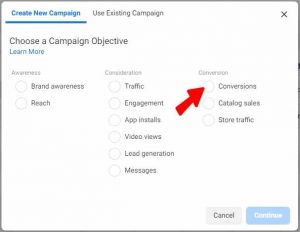— December 24, 2017

Free-Photos / Pixabay
How do employees learn best?
Well, it’s kind of a complex answer…
Employers are increasingly aware of the importance of professional development and employee training. In fact, Training Magazine reports that U.S. companies spend an average of $ 4.5 billion annually on employee education programs.
However, these initiatives go much deeper than just skill development. Effective programs can increase productivity, improve accountability and enhance employee satisfaction. Ultimately, these benefits even combat turnover and add a real boost to your bottom line.
There are numerous tools, teaching styles and avenues for education to choose from. They range from conferences to traditional in-classroom education to on-the-job training. It can be a lot to tackle, but with the right strategy and insights guiding your decisions – you’re sure to make a lasting difference among your team (while saving big on your investment).
So how do employees learn best? And how can employers use that to their advantage? Let’s break down the best practices for an effective employee education program to find the answers.
Keys to a Thriving Employee Education Program: 5 Tips
1. Personalization at Every Step
Everyone absorbs and processes information in different ways. A successful program accommodates different learning styles, attitudes and skill requirements with a variety of educational tools.
Work to understand your employees’ unique personalities and learning styles through aptitude or psychometric testing. These can offer key insights into how you can help your employees succeed.
Personalize education when possible. But when a tailored approach isn’t applicable, ensure your program still offers resources for a variety of learning styles. Common learning styles include auditory, visual and kinesthetic.
Resources can include traditional lectures, videos or workshops. And be sure to look outside of your organization for additional aids. For instance, you could invest in online education programs, send employees to a conference or bring experts on-site for a training experience.
Spend time researching tools to find the right mix for your staff.
2. Create a Comprehensive Education Plan
The two primary components of a successful education program are employee training and professional development:
- Employee training: Job-related tasks that focus on core competencies of a position
- Professional Development: Long-term, formal education that focuses on career progression and skill building
Training will take priority early in an employee’s tenure. However, it’s essential to routinely provide training opportunities throughout their career. Training can include on-the-job or formal training programs. These programs increasingly use online tools to reduce costs and streamline the training process.
Professional development requires employers and employees to think more strategically about opportunities for fundamental skill-building. While it’s essential to employee success, it can become costly without proper research and planning.
Analyze both your company’s growth potential as well as your employees’ areas of strength and weakness. Where can their paths intersect and how does it add value? Consider mentorship opportunities and tuition reimbursement to spearhead these initiatives.
3. Introduce Mentorship Programs
In line with tip #2, mentorship opportunities offer a wealth of growth opportunities. They are essentially a one-two punch in the education realm. Mentorships provide exceptionally tailored training opportunities for budding employees, but also develop key management and leadership skills among seasoned staff members.
When implementing a mentorship program, always set clear timelines and objectives. It’s important to regularly meet with mentors and mentees to gauge effectiveness and keep everyone on track. If you feel your mentorship program diverting, consider injecting new resources and training aids into the program.
4. Make Education Stick, Not Stink!
In a 2015 InterCall report, one-third of employees said their company’s education techniques weren’t a productive use of their time. Another third said the training they received wasn’t interesting or engaging. While these figures are alarming, they come with a variety of easy (but often overlooked) solutions:
- Focus on real skill needs:
Don’t train for the sake of training. Make employee education count by asking your staff members where they want additional skill development; study positions and trends in the field for areas of opportunity. - Incentives training:
This one can take some creativity, but the pay-back is unrivaled. Here’s a quick example:We all know the importance of cybersecurity training, but employees can still find the programs somewhat tedious…What if, you got innovative with an employer-sponsored identity protection plan for employees, and offered it as an incentive for completing the program?
Through this incentivized training program, you can motivate your team with an existing high-value, low-cost reward that aligns with the acquired skills — it’s a win-win.
- Keep learning fun:
Never overlook the power of fun when selecting training programs. Incorporate learning into your culture, employ highly-motivating educators and interactive tools to get employees excited and engaged.
5. Track, Analyze, Tweak, and Repeat
Good programs will change radically over time. It’s important to routinely track employee performance and evaluate skillset advancements against KPIs. Make changes accordingly and never stop asking yourself, “how do employees learn best?” Because that answer will inevitably change as well.
Make an effort to stay up-to-date with the latest in employee education news. And be sure to test the waters with new technology and training methodologies. Taking a proactive approach to education will ultimately cut costs and boost performance long-term.
Education Shouldn’t Stop at 5 O’clock
We’ve discussed employee education and maximizing employee potential in-depth. However, it’s important to remember that sometimes the most profitable investments in education aren’t always so cut and dry. Innovative employers should back these investments with educational resources that don’t just benefit employees in their job or career but also in their personal lives.
In other words, give employees the vital tools and tactics to keep themselves and their families safe and thriving. When you combat threats in their day-to-day lives, such as the increased risk of cybercrime and fraud, you help ensure they’re mentally and emotionally present when they arrive to work.
Business & Finance Articles on Business 2 Community
(172)






